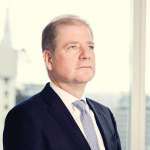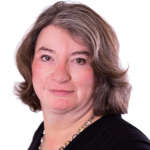Casting an eye over the results for the world’s 100 largest law firms, 2016/17 has been the definition of grinding out a result. Not a pretty result at that.
The group as a whole hiked revenues 3% to $98.82bn, pretty much tracking the increase in lawyer numbers. In part due to the strength of the dollar, there are some surprising results. The number of $2bn-plus law firms has fallen from ten to eight (thanks to Freshfields Bruckhaus Deringer and Linklaters). The number of $1bn-plus firms falls from 35 to 34. Consolidation continues to be a force in the industry but almost exclusively in the global mid-tier, not its upper echelons.
The good news is that, against significant headwinds thanks to Brexit, the US elections and a patchy global economy the group arguably performed slightly better than last year, when results were flattered by mergers. But the group as a whole has barely managed to move the revenue generated per lawyer for a decade now. In real terms, it is substantially down on its pre-banking crisis levels. There is considerable evidence – with robust legislative activity and tougher regulation on a global level – that demand for legal services is rising but elite law firms are evidently losing a little market share to New Law providers and a lot to in-house teams.
Looking at individual firms, it was a respectable year for the New York elite, including another blistering performance from Paul, Weiss, Rifkind, Wharton & Garrison and a much-needed rebound from Weil, Gotshal & Manges. The leading Wall Street firms are generally doing fine, proving largely immune from the pricing pressure hitting much of the national US market and sustaining solid growth. But the real story is still the rise and rise of a small band of expansive national players with Kirkland & Ellis surging forward and Latham & Watkins, Gibson, Dunn & Crutcher and Ropes & Gray all continuing to assert themselves.
Add in the LA-bred disputes leader Quinn Emanuel Urquhart & Sullivan and you have a band of muscular and ambitious practices asserting themselves at home and abroad.
Turning to the City, everything comes with a currency-shaped caveat, since foreign earnings have boosted leading London firms’ sterling-denominated results, while a dollar conversion for our tables takes that away. But Allen & Overy has managed a stand-out year, hiking its revenues by 16%, sealing a remarkable ascent from the mid-2000s when it trailed far behind its peers. Freshfields put in the softest performance this year of its peers. The firm gets a lot of respect in the industry, being often characterised as the strongest placed of London’s big four. But its post-banking crisis performance has been too inconsistent for comfort. If that continues, perceptions will change. There will be consequences.
Linklaters has a little more cause for cheer while Clifford Chance (CC) is fine on the numbers, though it would be easier to benchmark that firm if it was clearer these days what it was aiming for.
But long-term trends in markets and currencies are hardly encouraging for London’s top firms. Riding high in 2007, CC was the first firm to generate more than $2bn. A decade later its revenues have fallen back by 8% in dollar terms. Linklaters and Freshfields are also both down over the decade on the same yardstick. Yes, that is somewhat artificial but it also reflects a global firm’s ability to attract and retain partners across borders.
The age of the $10m super-rainmaker is upon us. There are no easy answers for global firms that cannot play that game.
To access the Global 100 2017 main menu, please click here.












